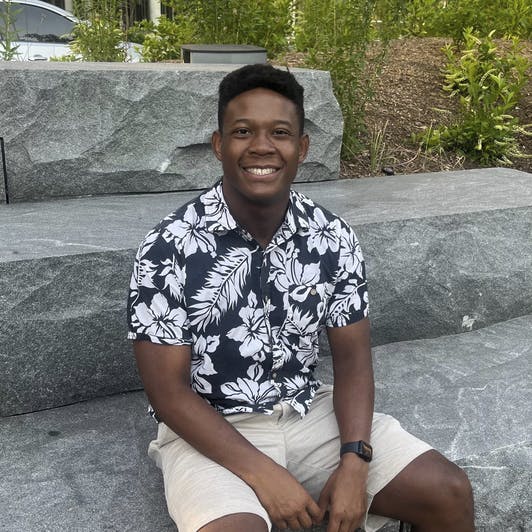Indo-Pacific Leaders Say Coalition Comms ‘Not a Technical Problem’
Combatant command leaders discuss challenges in standing up new communication networks to share information in the partner environment.

The biggest challenges when it comes to communication at the military coalition level is law and policy, Army Pacific G-6 Assistant Chief of Staff Col. Alton Johnson told an audience during a panel at the AFCEA TechNet Indo-Pacific conference in Honolulu, Hawaii.
Johnson and other combatant command leaders spoke on how they want to establish efficiencies when standing up new systems without recreating the wheel, which can introduce longer timelines and red tape. Plus, they want to ensure data isn’t getting into the hands of those who don’t have permission to use it.
“We have to determine how we parse out the ability to communicate with multiple partners on the same system,” Johnson said. “It’s not a technical problem because we can connect them on to certain systems and be able to provide share information, provide data.”
Johnson said the main issue resides in how the Defense Department segregates information that can be shared with partners. These partners need to be assured that the data they share with U.S. allies does not find its way into the hands of their non-partner nations, even if they are already a U.S. partner.
“It’s how we segregate that information and give the various partners that we work with the assurance that they have the ability to control and maintain their own data that is not at risk and that they’re comfortable sharing with certain partners and not others,” Johnson said. “Policy prevents us from getting there because there are things that limit our ability to share that information across the board.”
CW5 Yuri Camesi, senior technical advisor at Indopacom’s I-Corps G6, spoke about his fear of duplicative lines of effort between the services and said his biggest pain point is when services follow similar projects, unaware of duplication.
“Where is this data really at? Where are we coinciding this project across the board and how do we make sure that we feed each element into that project. If I have an issue over here, am I feeding something in the bigger picture? To feed the interoperability, to feed the policy, or am I spinning my wheels over here?” Camesi said.
Johnson said that despite DOD’s desire to continue to experiment with data-sharing solutions with partners, the work that is being done to layer commercial tools on top of ICAM solutions needs to be maintained beyond two-week exercises.
“We continue to push the ball forward, but what we’ve got to do is get to a point where it’s not so difficult and it’s not so much work to prepare for everyone,” Johnson said. “We’ve got to get to a point where it’s persistent, where it exists, where we can use it on a regular basis, and we can train people on it.”
Gen. Ray Phariss, commanding general of the 311th Signal Command (Theater), said that a cultural shift will be a major part of building and trusting persistent networks.
“I think part of the problem is cultural and that we’ve been network based for so long that we distinctly go to what’s the network solution when, in fact, the network piece is the last part of it,” Phariss said.
Phariss warned that not all nations have equal levels of cybersecurity infrastructure maturity and that networks will only be fully successful when agreement is reached on their function.
“Networks can only mirror what the international agreements are between the various partners,” Phariss said. “So if you can’t get a clear definition of what those agreements are. You can’t mirror the technical solution to that.”
Phariss emphasized that while not all theaters are the same, Indopacom can learn from NATO’s network when it comes to sharing information between trusted partners. Additionally, a single solution will not work, unless there is room to customize and reshape that solution depending on the theater being operated in.
“Any significant conflict is going to involve coalition partners. We need to actually take the next step, next evolutionary step, and practice in a coalition environment, and not have these networks taken up and down,” Phariss said. “We’ve got to have an approach at the high level that clarifies the use cases and gives us a consistent approach and framework to build against, so that we’re making continuous gaining improvements and not just this episodic up and down, requirements change each time.”
This is a carousel with manually rotating slides. Use Next and Previous buttons to navigate or jump to a slide with the slide dots
-

Elevating Cybersecurity in the Intelligence Community
The Intelligence Community is developing strategies to protect data and strengthen resiliency against emerging cyber threats.
30m watch -

Best Practices for Agencies Modernizing Infrastructure for 5G
Hear from leaders on how they’re preparing for 5G, highlighting key challenges and lessons learned along the way.
25m watch -

IARPA Director: U.S. Must Lead in AI to Stay Ahead of Adversaries
IARPA Director Rick Muller highlights the agency’s role in advancing AI research and safeguarding U.S. interests amid global competition.
5m read -

Census Bureau Embraces Modernization, Data Innovation
Census Deputy Director and Chief Operating Officer Ron Jarmin outlines how the bureau is expanding its data collection, using AI to make Census staff more efficient and spearheading modernization efforts to better meet 21st century data needs.
23m listen








